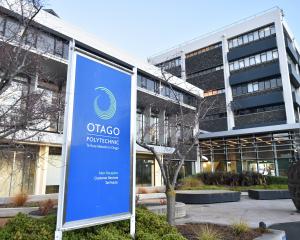The first failure was the Government's assumption that it did not need to prepare the public for reasoned debate about whether to permit more mining in the so-called "conservation estate".
The second failure was to proceed with its investigation and the touting of the assumed benefits while having already lost the war of words to the considerable individual opposition and that organised by environmentalists, the Green Party, the Labour Party and everyone else claiming title to guardian of the nation's remaining undeveloped sanctuaries.
The third failure was the slowness of the realisation that being "green" is still taken by perhaps a majority of voters as being part of the heritage of "New Zealandness": any threat to that irrational, but nevertheless emotionally real belief, ventures into the area of high political risk.
And this is a decidedly risk-averse Government.
The prospect of fighting an election on an issue upon which National could not possibly "win" the emotional battle provided a reason for a majority in the Cabinet to consign to the shredder the prospect of mining in conservation land.
It is a political defeat for the Minister of Energy and Resources, Gerry Brownlee, and the Minister of Conservation, Kate Wilkinson, who, if they were merely flying a very big kite to test the political breeze, have come a considerable cropper in proposing - as Mr Brownlee once described it - using mining as a way of improving New Zealand's "parlous financial position".
People quite rightly asked what the point was of specific legislative protections for so-called schedule four land in the Crown Minerals Act if they could be removed at the whim of a government.
That concern seems to have hit home, as an assurance has now been given that presently protected land will continue to be inviolable for the purposes of further mineral exploration or extraction.
Furthermore, the Government will add 14 areas, totalling 12,400ha, to the schedule, and in the future all areas given equivalent classifications, such as national parks and marine reserves, will automatically become part of the schedule.
A considerable flexibility with the language has been applied to official statements about the Government's backdown: for example, "New Zealanders have given the minerals sector a clear mandate to go and explore ... land, and where appropriate, within the constraints of the resource consent process, utilise its mineral resources for everyone's benefit," according to Mr Brownlee.
That is an interpretation of the many submissions from objectors that George Orwell would have recognised.
"As many people have pointed out, around 85% of the country is not protected by schedule four, and a great deal of that land has mineral potential."
Mr Brownlee has claimed this interpretation as a victory, saying the exercise gave the Government the desire to proceed with further investigation of mineral extraction prospects, especially in Northland and on the West Coast.
This backdown may be considered a victory for public protest, a combination of written submissions, public marches, and the inability of the Government to convince people that mining in the conservation estate was worth the $60 billion presumed mineral wealth.
Even when Mr Brownlee tried to convince the sceptics by asserting the minerals extracted would be put to use in "green technologies", such as the manufacture of hybrid cars, wind turbines and even low-energy light bulbs (although the nominated sites were gold and coal-rich, not rare earths), few were convinced.
When taken in conjunction with the Government's intentions to change the Resource Management Act to meet the concerns of project developers, and to Mr Brownlee's strong hints of special arrangements, involving other ministers, for preferential access to the mineral resources, scepticism was warranted.
The absence of any attempt at a cost-benefit analysis, site by site, and, in broader terms, the potential of mineral exploitation to have a deleterious impact on our other established industries, including tourism, and particularly on the value of the New Zealand dollar and the likely effect on exporters, was a illustration of the Government's arrogance - modified in the end, perhaps, only by the fearful prospect of a serious fight with the users and owners of Auckland's playgrounds and holiday-home locations on Great Barrier Island and the Coromandel.
This is the Government's first serious reverse; it will be instructive to see what it learns from the experience.












